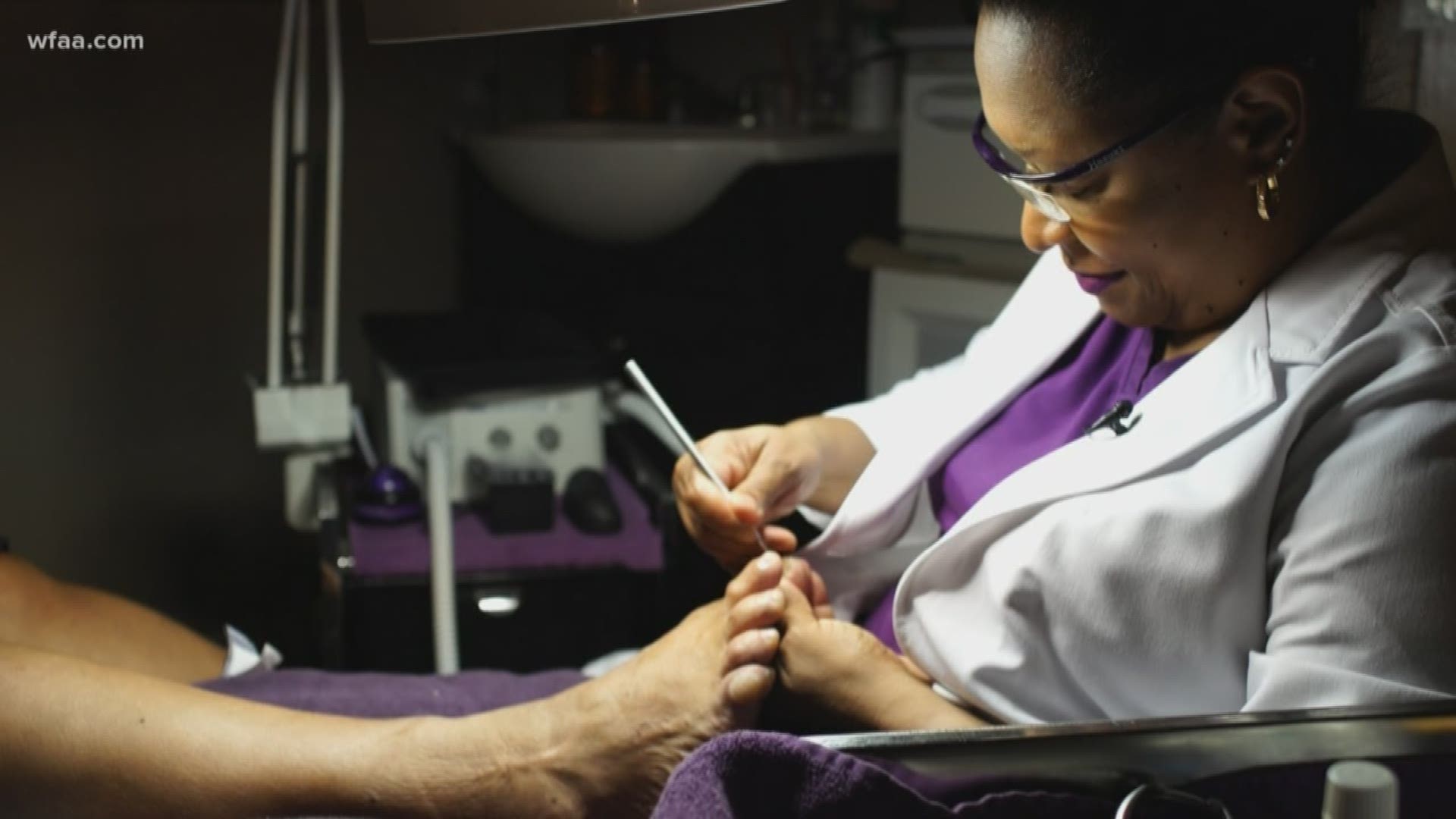For the roughly 30 million Americans who live with diabetes and 48 million more who are pre-diabetes, severe tingling and numbness in their feet can be a troubling and problematic symptom.
But one woman in Bedford has found a way to offer those suffering from the affliction some relief.
“I want you to focus on the music, the aromatherapy,” Lambretta Woolfolk said to her client in a low and soothing tone. "You can take yourself to another place, wherever you want to go."
Tucked away in a quiet corner of Pure Comfort Spa, the lights are dimmed and in this tiny zen den, Woolfolk helps heal the soul, through the sole.
“There's power in touching the feet,” Woolfolk said.
The sole of the feet is her specialty.
“Everything starts with the foot because it's your foundation,” Woolfolk explained.
She is one of only two certified podologists in Texas, not to be confused with a podiatrist.
A podologist focuses on foot care, and Woolfolk said many of her clients have diabetes and foot complications from the disease.
“From here down, there's no circulation to the heart,” Woolfolk said while pointing to the area between the knee and the foot. “So, if you've ever seen a diabetic, whether Type One or Two, that's not getting much exercise, then the blood is coming down [toward the ankle] this way."
Numbness, tingling and discoloration are all signs of lower limb complications for diabetics.
Jean Choyce, one of Woolfolk's patients, said she's spent many nights in pain from neuropathy.
“Couldn't sleep because of the pain."
She has lived with neuropathy for 15 years and said her nerve damage is so bad her legs would often cramp and swell.
But, Woolfolk’s "pedicares," as she calls them, have helped.
“Every two weeks I come,” Choyce said. “Just like a haircut or anything else I have to maintain, I make it a part of my budget.”
Woolfolk uses a waterless system and particular tools to reduce the risk of exposure to bacteria, which is especially dangerous for diabetics.
She checks for edema and then fungus between the toes and ulcers.
“If unattended, they can become infected, and the last thing you want is gangrene. Gangrene can set in, and it moves like a flood," Woolfolk said.
For the last three years, Choyce has discovered what it means for her 'sole' to be at peace again.
“I don't have the pain that I had. When I leave, I just feel like jumping and shouting, you know, I just feel good,” Choyce said.
More on WFAA:
- Diabetes type 1.5: Restaurateur's own diagnosis of rare disease inspires new menu
- Songs of hope: Booker T. Washington student heals people through music with ukulele
- Running to recovery: Partially paralyzed after stroke, man defies odds, opens North Texas gym
- A perfect fit: Siblings find passion in health and business after going through weight loss journey
- Three ways to fight age-related muscle decline

